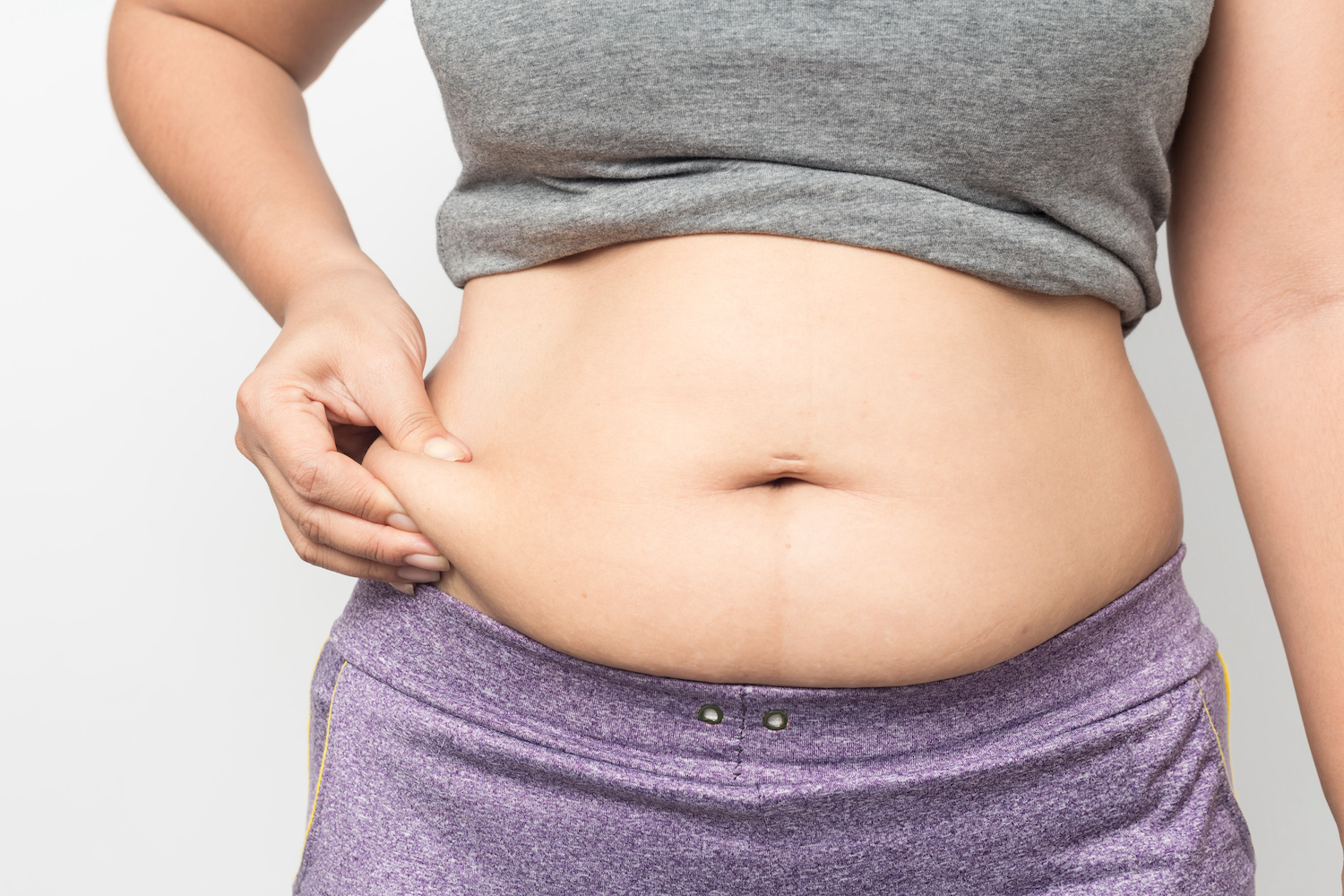
Menopause weight gain? Fasting might help
From Time Restricted Feeding to the 5:2 Diet, fasting is big news right now. Fans of fasting say it aids weight loss, supports cognitive function, and boosts energy levels — but is it safe and effective when we’re juggling hormones, menopause, careers, family life, and other major midlife shifts? Let’s explore the potential benefits and pitfalls of different types of fasting and answer the burning question – is fasting right for me?
What is fasting?
Fasting is simply the practice of not eating food (and occasionally no drinks either) for a set amount of time. Cultures all over the world have practiced fasting for thousands of years, for religious, ethical, and health reasons. The famous Greek physician Hippocrates recommended therapeutic fasting as far back as the 5th century BCE, and many medical systems rooted in traditional wisdom still incorporate fasting as part of treatment plans today.

What are the pros and cons of fasting?
Good cellular housekeeping
Modern-day science has been catching up with traditional wisdom around fasting to investigate exactly what happens in the body when we abstain from food for long periods.
One of the key discoveries is the way fasting acts like a switch for a process called autophagy – a form of cellular housekeeping. When switched on, autophagy allows cells to clear out misshapen proteins, deal with damaged bits of DNA, and remove harmful toxins. In this way, autophagy helps keep our cells functioning efficiently and may be associated with healthful aging.
Fat-burning and weight loss
Fasting for more than 12 hours pushes your body to start using substances called ketones for fuel, rather than glucose. Ketones are produced when fats are broken down. A study of obese women following a 16:8 fasting protocol (a 16-hour fast followed by an 8-hour eating window) for 3 months showed this was effective for reducing weight, Body Mass Index, waist circumference, and cardiovascular risk, even when food intake was not closely monitored.
Better blood sugar balance and insulin sensitivity
Hormone changes during perimenopause and menopause can affect how well our cells respond to insulin, the hormone that carries sugars out of the bloodstream into cells. If we become insulin resistant, we end up with higher amounts of glucose in our blood which then gets stored as fat.
Fasting for 14 hours overnight and eating within a 10-hour eating window is known to be effective at improving insulin sensitivity and blood glucose levelswithin 12 weeks.
Reducing inflammation
Chronic inflammation is a major factor in nearly all chronic health conditions including arthritis, obesity, auto-immune conditions, and heart disease. Inflammation levels in the body are measured by tracking levels of certain biomarkers like C-reactive protein (CRP). A meta-analysis of human studies investigating the effects of fasting found that fasting can significantly lower CRP levels, particularly in overweight and obese individuals.

Boost brain health
There isn’t a huge amount of research in this area done on humans, but animal studies show promising effects of fasting for cognitive function and possible prevention of neurodegenerative diseases like Alzheimer’s.
What are the side effects of fasting?
Fasting certainly isn’t suitable for everyone, and we each have our capacity for managing fasts based on our health and what kind of lifestyle we live.
If we are under a lot of stress, fasting can make this worse as it adds additional physical stress. Equally, if we are handling stress well and don’t have any underlying health conditions, fasting can be a useful tool to use for weight balance, brain health, and healthy aging.
If you are new to fasting, start slowly and build up gradually — don’t jump straight in with a 14-hour fast! And if you start to experience unpleasant side effects, ease back on the length and frequency of your fasts.
Possible side effects of fasting include:
- Hunger — this is the obvious one!
- Feeling dizzy or light-headed
- Bloating
- Constipation
- Fatigue and low energy
- Irritability and low mood
- Dehydration
- Insomnia
- Bad breath
The risk of side effects can be minimized by staying hydrated with water and herbal teas and resting as much as possible during your fast.
5 types of fasting: How to choose the right one
There are lots of different ways to approach fasting, depending on how often you want to do it and what kind of lifestyle you have. The benefits of fasting will be even greater if you can make healthful food choices on non-fast days, and always be mindful of how you are feeling day-to-day. If your menstrual cycle is giving you cramps and low energy, don’t fast that day. If menopausal insomnia is driving you nuts, don’t do anything longer than a 12-hour overnight fast. Always adapt the fasts to suit you and not the other way around.
Here’s our easy guide to different types of fasting:
Time Restricted Eating / Time Restricted Feeding
What is it? This is the most common type of fasting and involves eating regular meals within a specific time window. Versions include:
- 12:12 – fast overnight for 12 hours then eat meals within a 12-hour window.
- 14:10 – fast for 14 hours, eat meals within a 10-hour window.
- 16:8 – fast for 16 hours, eat meals within an 8-hour window.
Who is it good for? If you’re new to fasting a 12:12 fast is the easiest one to start with, and can gradually be adapted to suit the longer fasting times. Because you are asleep for the majority of the fast and eating normal meals in the eating window, this type of fast is good for people who want all the benefits of fasting with simple, no-fuss fasting protocols.
Circadian Fasting
What is it? Circadian fasting involves aligning your meals with your natural 24-hour internal body clock. Typically, this means eating larger meals earlier in the day, and fasting during the evening and overnight when digestion is less active.
Who is it good for? People who are in tune with their daily rhythms and can adapt meals to suit the fast.

Alternate Day Fasting
What is it? Rather than fasting every day for a set amount of time, Alternate Day Fasting involves alternating between eating normally for one day and then reducing food intake to around 500 calories or abstaining from food completely on the next.
Who is it good for? People who have the discipline to stick to the protocol! It can be harder to fit in with social occasions or a busy work diary than Time-Restricted Feeding and may be too extreme for people who have busy and demanding lifestyles.
The 5:2 Diet
What is it? The 5:2 diet allows you to eat normally for 5 days a week and then fast or have a small meal of around 500 calories on 2 other days.
Who is it good for? People who want more flexibility than the Alternate Day Fasting.
Who shouldn’t fast?
Most healthy adults can safely practice a simple 12-hour overnight fast without any difficulties so long as they are eating normally during the day. However, longer fasts and intermittent fasts are not recommended for:
- Diabetics and those at risk of hypoglycemia
- Children and teenagers
- Frail older adults
- People recovering from illness or exhaustion
- People with thyroid conditions, chronic kidney disease, heart disease, chronic fatigue syndrome, or immunodeficiency
- During pregnancy and breastfeeding
- Anyone with or at risk of an eating disorder or binge eating
- Those who are underweight or at risk of becoming underweight
- People taking medications that require consistent and regular food intake
Managed carefully, fasting can be safe and effective but if you have any doubts about whether fasting is suitable for you, speak to your healthcare provider about it first.
This article was originally published here on The Midst Substack.




